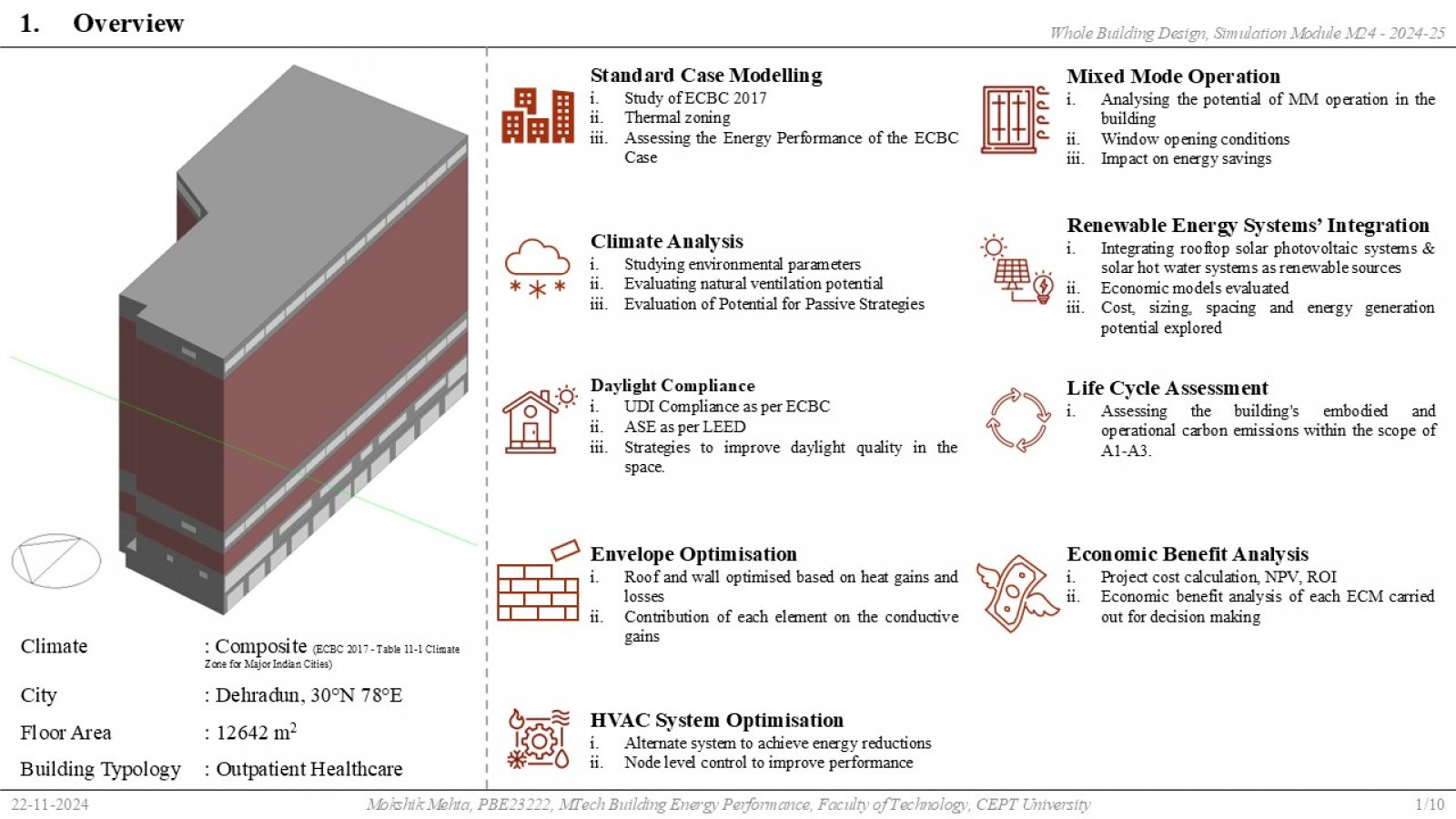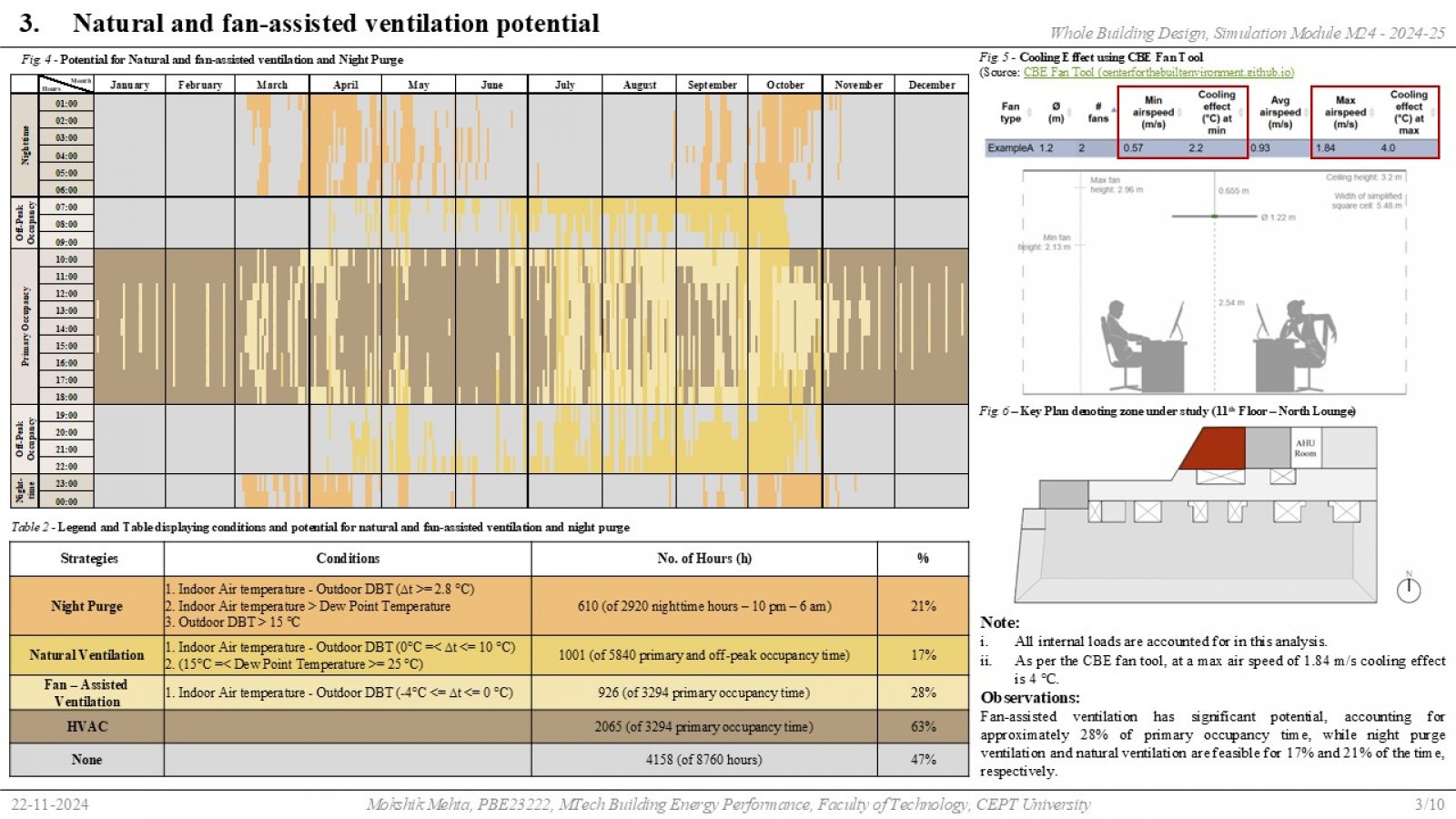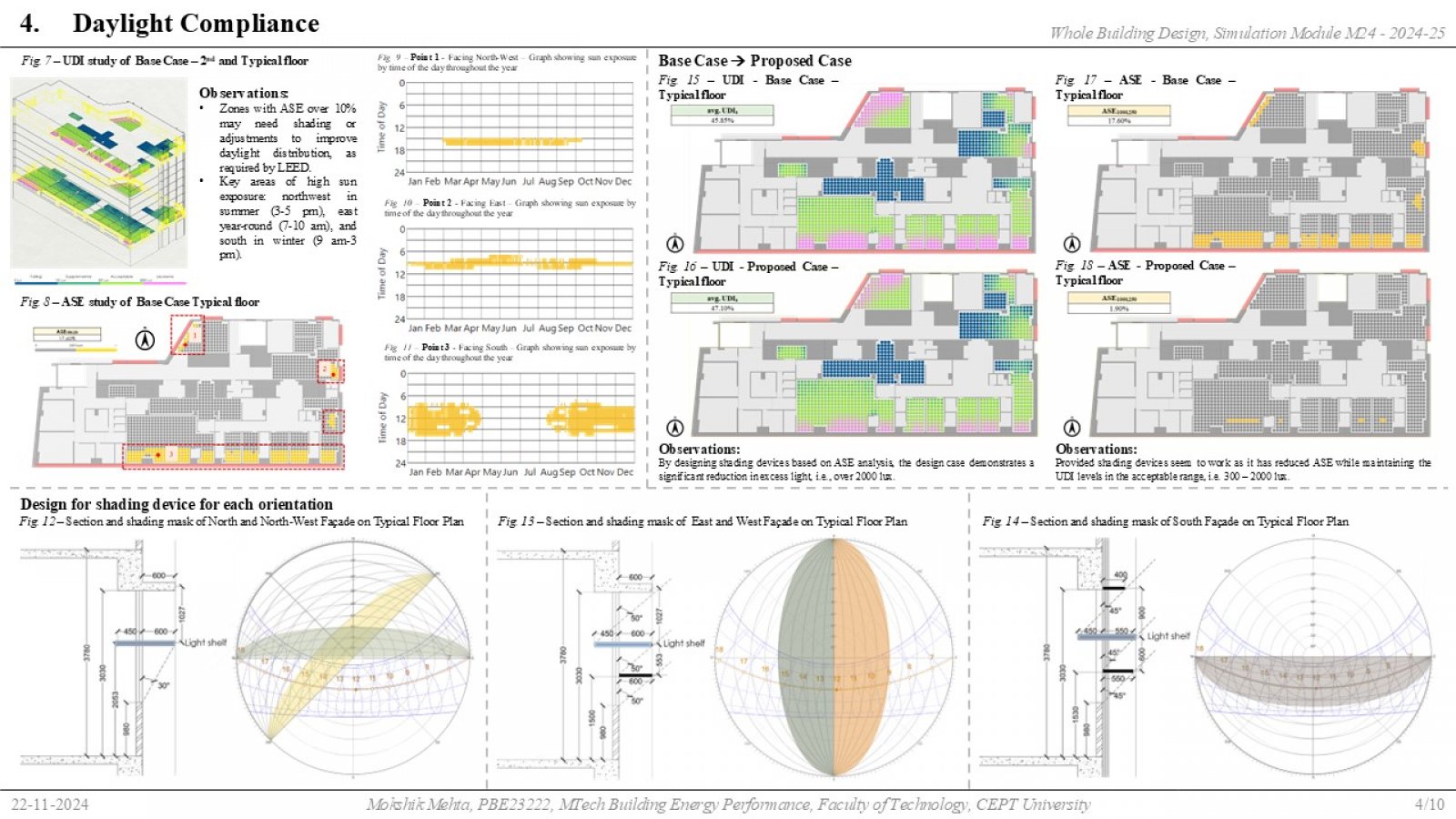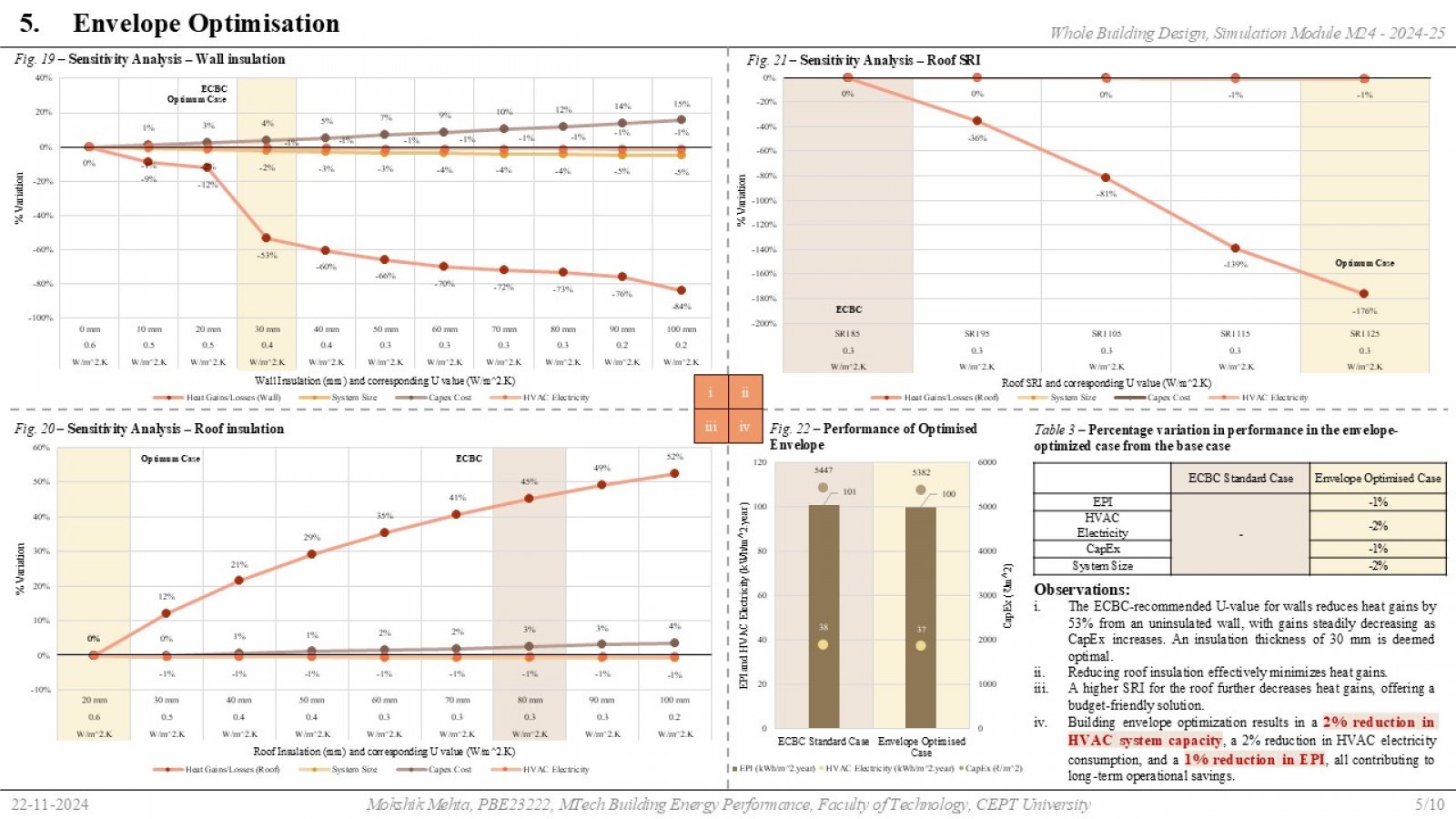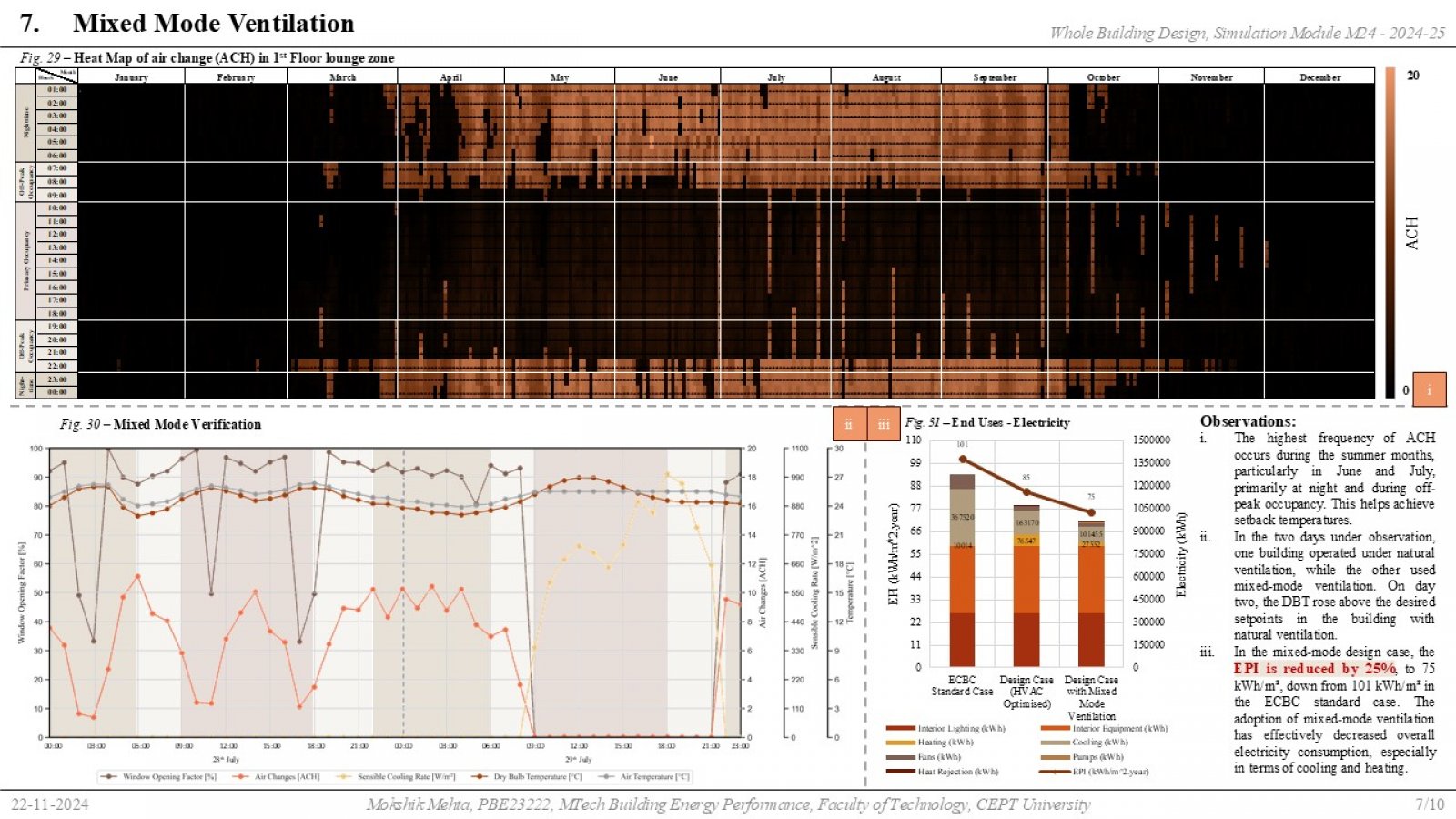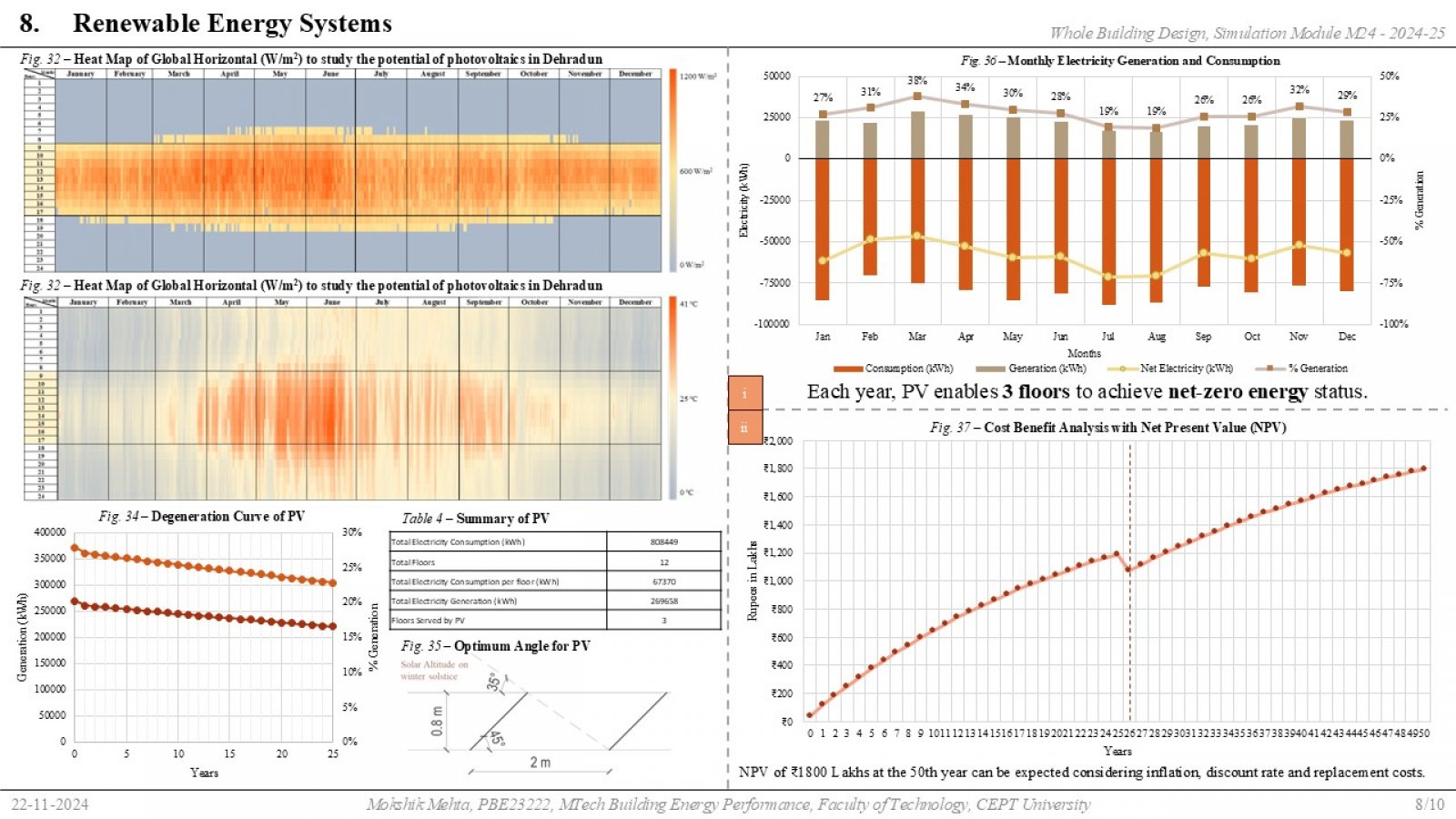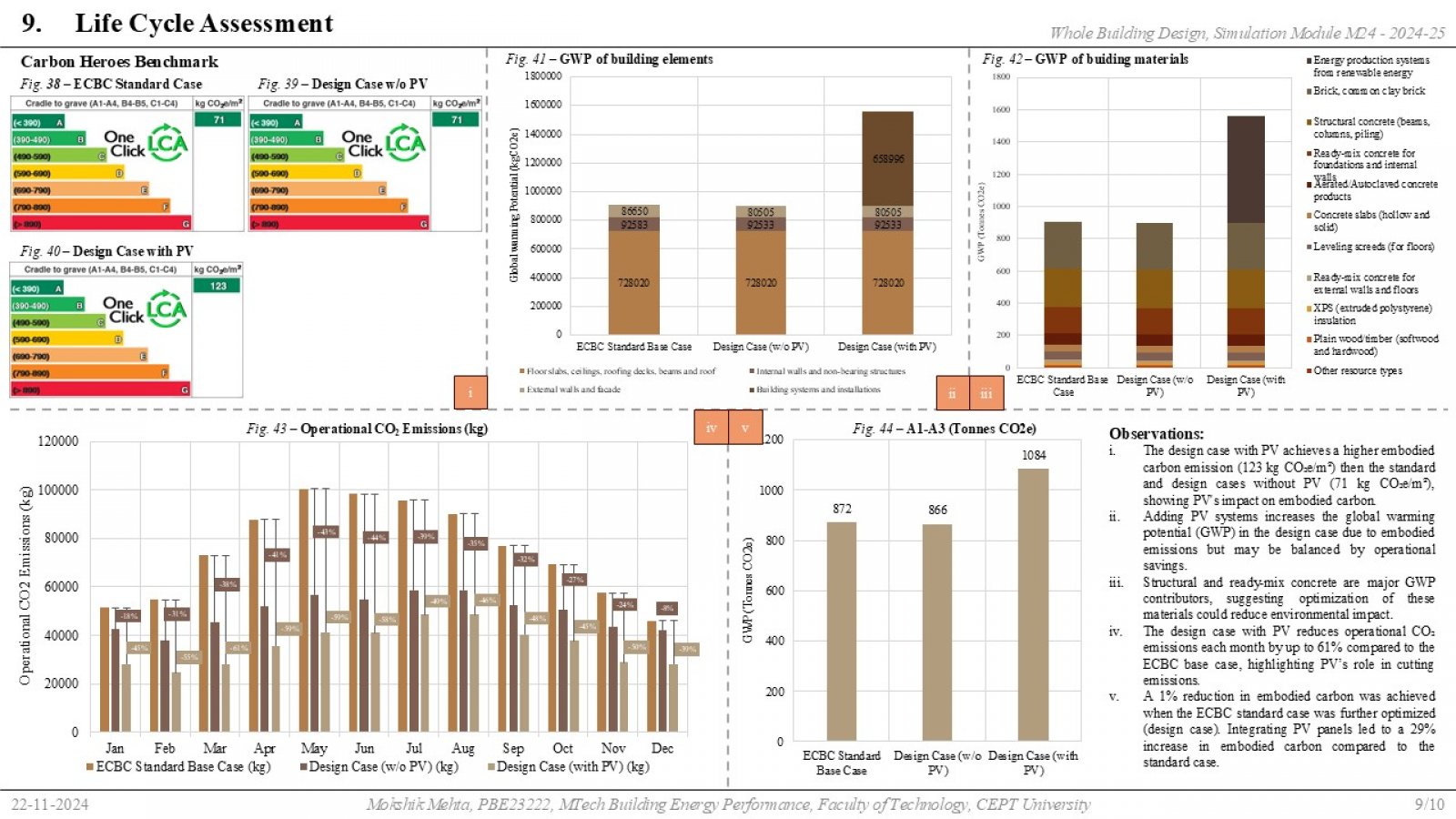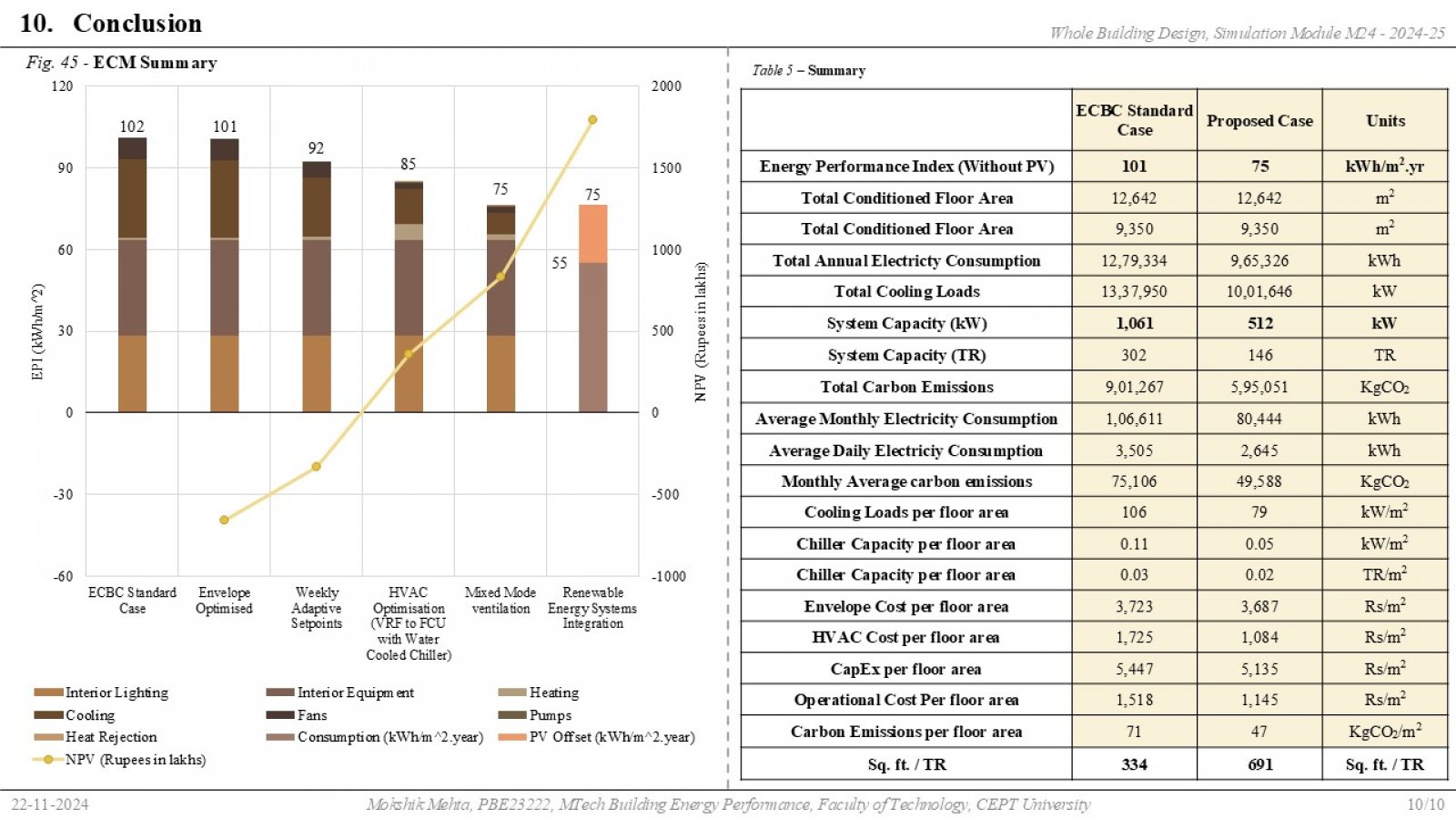Your browser is out-of-date!
For a richer surfing experience on our website, please update your browser. Update my browser now!
For a richer surfing experience on our website, please update your browser. Update my browser now!
In the 3rd semester of the MBEP program, I explored the Lighting and Integrated Design Lab (IDL) and Whole Building Design (WBD) modules, which provided a comprehensive approach to building energy efficiency. This semester allowed me to integrate scientific principles, optimization techniques, and cost feasibility, giving me a holistic understanding of energy-efficient design and its real-world applications. To enhance the energy performance of a commercial healthcare building in Dehradun, the project commenced with a detailed analysis of the Energy Conservation Building Code (ECBC) 2017. The code's mandatory and prescriptive provisions informed the creation of a baseline thermal model, which revealed an initial Energy Performance Index (EPI) of 101 kWh/m².year, serving as a reference point for assessing energy consumption and identifying improvement opportunities. The optimization process focused on reducing operational carbon emissions and energy costs by implementing energy-efficient measures. Key strategies included enhancing the building envelope, optimizing the HVAC system, and adopting a mixed-mode operation approach. These efforts successfully reduced the EPI to 75 kWh/m².year, representing a 25% improvement over the ECBC baseline. Further optimization was achieved by integrating on-site renewable energy systems, lowering the EPI to 55 kWh/m².year and offsetting 28% of the building’s electricity demand. This integration highlighted a strong commitment to minimizing the building's environmental impact and operational energy requirements. Throughout the process, economic feasibility, occupant comfort, and energy efficiency were carefully evaluated to ensure balanced and practical solutions. Sensitivity analyses of the envelope and HVAC system were conducted to determine the optimal extent of each measure. Simulations across annual, monthly, weekly, daily, and hourly timescales provided a comprehensive understanding of the building's performance and the impact of proposed measures.
